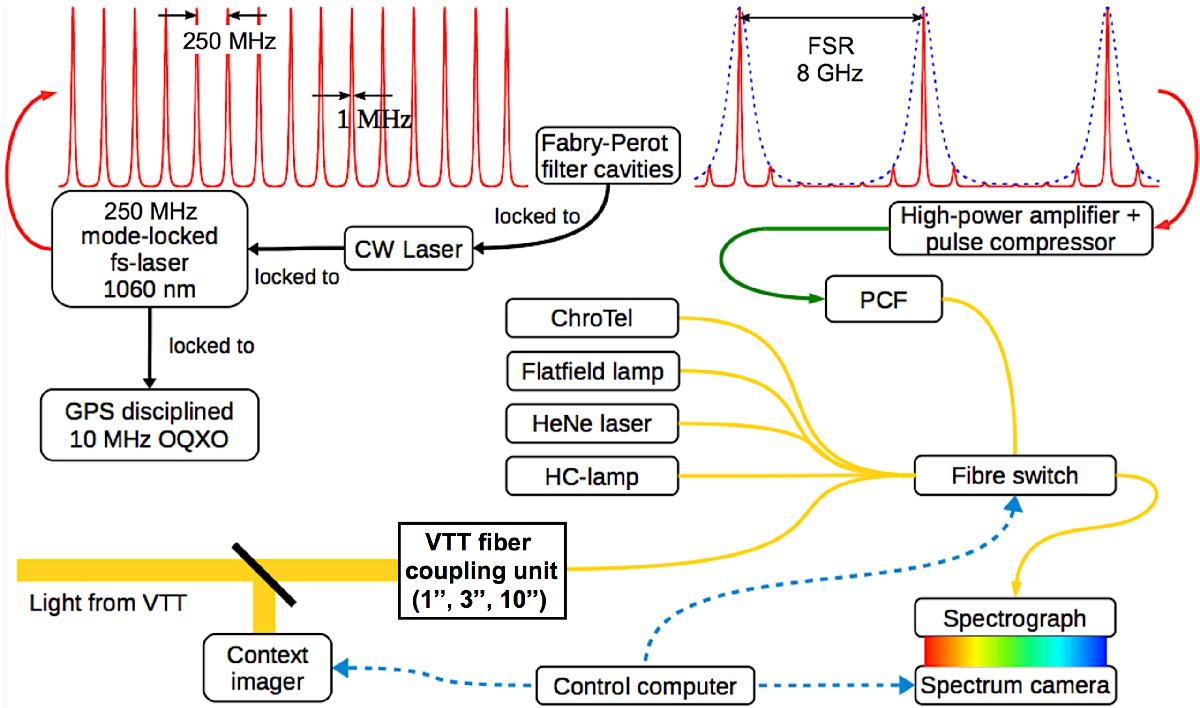Fig. 2

LARS system. The femtosecond ytterbium laser operates at a wavelength of 1060 nm with a repetition rate of 250 MHz, and is locked to a GPS-disciplined oscillator. The generated emission spectrum (upper left) passes a pair of identical Fabry-Pérot cavities which filter the modes to an output repetition rate of 8 GHz (upper right). The frequency comb spectrum is amplified and then broadened by a photonic crystal fiber (PCF). With single-mode fibers (yellow lines), the signal from each light source (LFC, sunlight, flatfield lamp, HeNe laser, hollow-cathode lamp, ChroTel) is guided to its own entrance port at the fiber switch. One output port is connected to the spectrograph (lower right). The light from the VTT falls onto a beamsplitter (lower left) and enters a fiber-coupling unit (1′′, 3′′, or 10′′) for spectral measurements and a camera for context imaging of the surrounding solar region. Acronyms are explained in Sects. 2.1 to 2.3. Figure adapted from Doerr (2015).
Current usage metrics show cumulative count of Article Views (full-text article views including HTML views, PDF and ePub downloads, according to the available data) and Abstracts Views on Vision4Press platform.
Data correspond to usage on the plateform after 2015. The current usage metrics is available 48-96 hours after online publication and is updated daily on week days.
Initial download of the metrics may take a while.


